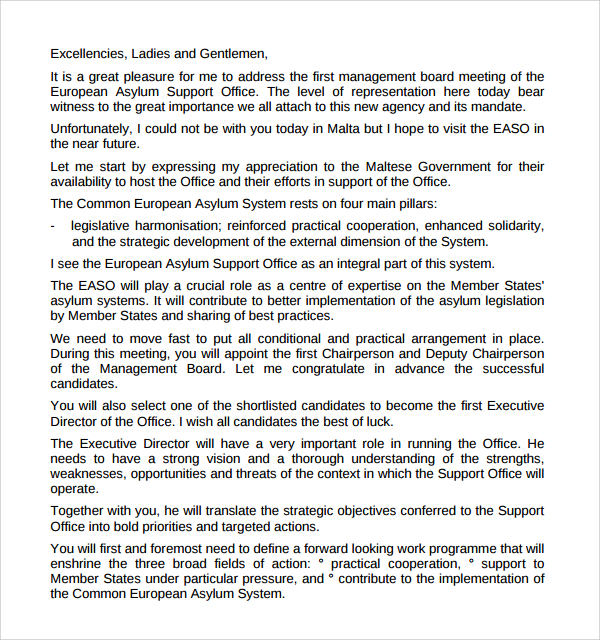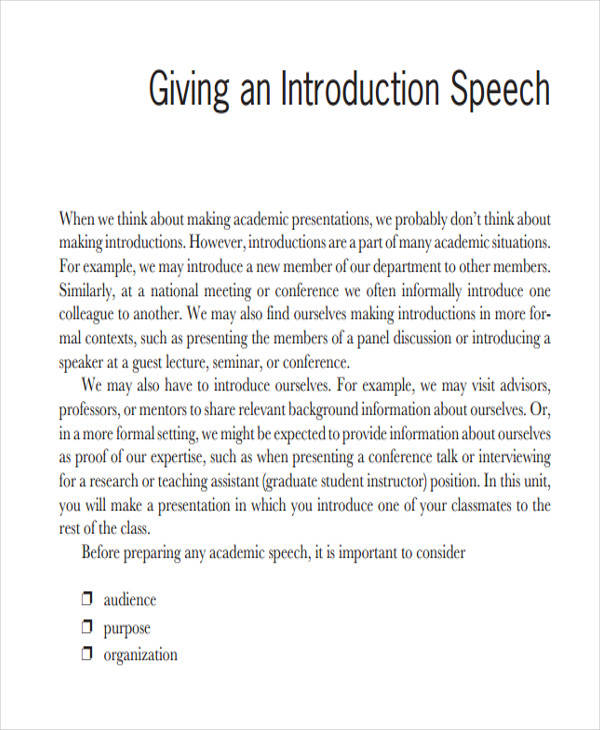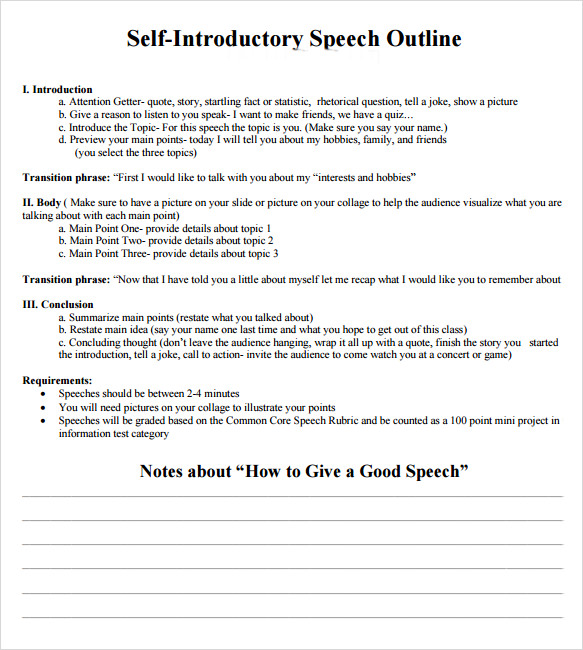
Gary Genard's
· Right from the first sentence, I’ve told you why this article matters, which is a powerful way to compel someone to read on. 2 Engage the visitor with an anecdote. Hook the visitor in with an intriguing narrative that gives a hint as to what the article is about and she’s more likely to continue reading. Example The speech is about you but make sure you build a relatable story to keep the audience’s attention. Show, don’t tell. Instead of saying how reliable you are, tell a story that shows it. For conclusion, try to leave your audience with a takeaway. Whether from your experiences or from a relatable standpoint · 1. Start with a strong introduction. Write the introductory part of your speech in a way that gets the attention of your audience and makes them want to listen to what you have to say. This step is essential to ensure that your audience follows through with your speech without getting distracted

Best Practices for Writing an Introduction
· If you want listeners to pay attention, become intrigued, and tell themselves they're in good company, do these four things, in the following order: 1) Grab 'Em from the Moment You Begin Speaking Consider how most presenters begin. Nearly always, it's along the lines of, "Good afternoon. It's so nice to see you all. Today I'll be talking about.." The speech is about you but make sure you build a relatable story to keep the audience’s attention. Show, don’t tell. Instead of saying how reliable you are, tell a story that shows it. For conclusion, try to leave your audience with a takeaway. Whether from your experiences or from a relatable standpoint · A good introduction needs to get the audience’s attention, state the topic, make the topic relatable, establish credibility, and preview the main points. Introductions should be the last part of the speech written, as they set expectations and need to

To prepare your introduction speech you’ll need:
· Right from the first sentence, I’ve told you why this article matters, which is a powerful way to compel someone to read on. 2 Engage the visitor with an anecdote. Hook the visitor in with an intriguing narrative that gives a hint as to what the article is about and she’s more likely to continue reading. Example · 1. Start with a strong introduction. Write the introductory part of your speech in a way that gets the attention of your audience and makes them want to listen to what you have to say. This step is essential to ensure that your audience follows through with your speech without getting distracted · If you want listeners to pay attention, become intrigued, and tell themselves they're in good company, do these four things, in the following order: 1) Grab 'Em from the Moment You Begin Speaking Consider how most presenters begin. Nearly always, it's along the lines of, "Good afternoon. It's so nice to see you all. Today I'll be talking about.."

The function of an introduction speech
· 1. Start with a strong introduction. Write the introductory part of your speech in a way that gets the attention of your audience and makes them want to listen to what you have to say. This step is essential to ensure that your audience follows through with your speech without getting distracted The speech is about you but make sure you build a relatable story to keep the audience’s attention. Show, don’t tell. Instead of saying how reliable you are, tell a story that shows it. For conclusion, try to leave your audience with a takeaway. Whether from your experiences or from a relatable standpoint · If you want listeners to pay attention, become intrigued, and tell themselves they're in good company, do these four things, in the following order: 1) Grab 'Em from the Moment You Begin Speaking Consider how most presenters begin. Nearly always, it's along the lines of, "Good afternoon. It's so nice to see you all. Today I'll be talking about.."

Short Introduction Speech
Introductions are meant to give an audience a quick run through of what they must know. Create a speech outline that will state the purpose of your speech and provide a preview of main ideas that are to be discussed. This is sure to give your audience a reason to · 1. Start with a strong introduction. Write the introductory part of your speech in a way that gets the attention of your audience and makes them want to listen to what you have to say. This step is essential to ensure that your audience follows through with your speech without getting distracted The speech is about you but make sure you build a relatable story to keep the audience’s attention. Show, don’t tell. Instead of saying how reliable you are, tell a story that shows it. For conclusion, try to leave your audience with a takeaway. Whether from your experiences or from a relatable standpoint
No comments:
Post a Comment